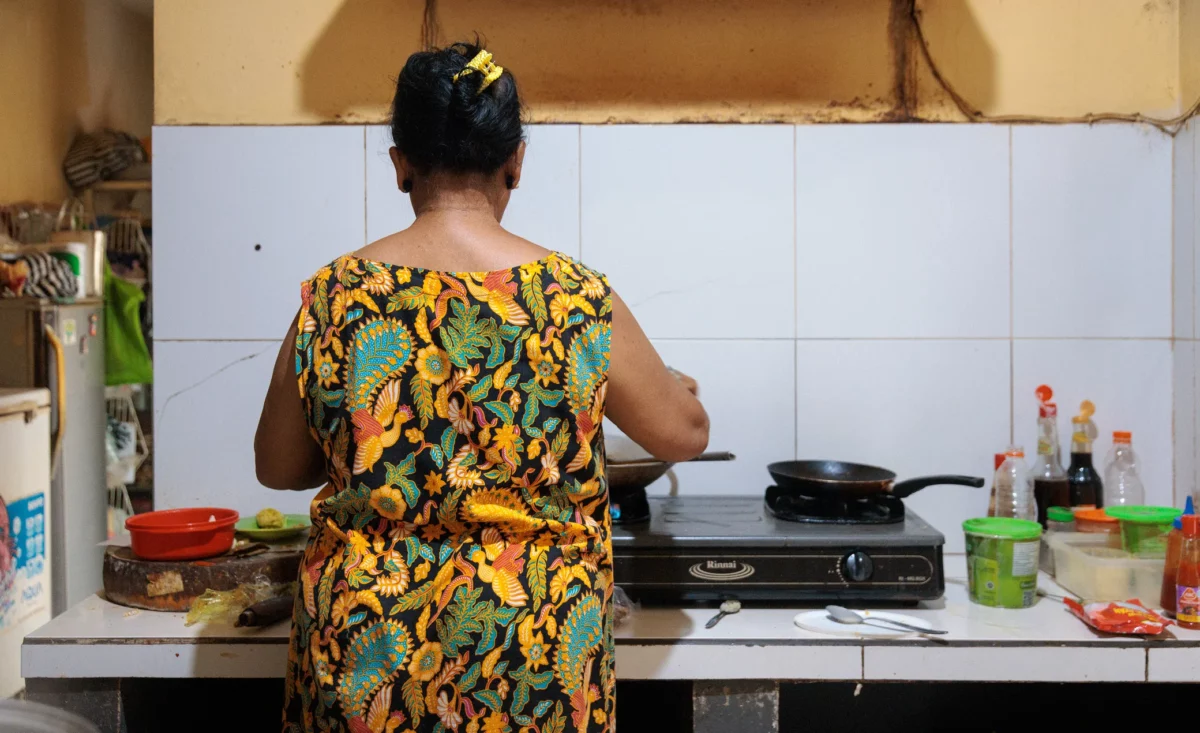It is hard to believe, but we are already well into November, can you believe it? Even for us who have been in the east for several months, the wind of change has been blowing. Heeding that Sanskrit proverb that says ‘The earth has ears, the wind has a voice’, we have been listening. The wind’s verdict took us to two different places.
Nevertheless, we can still smell the scent of flower offerings with the nose of our memory.
Neverland (or maybe Thereisland)
But now, come with us, we’ll take you to Indonesia, more precisely to Bali!
Everyone knows it, it has the reputation of being a unique, magical place, almost suspended in time.
Yet it is made up of many layers. The real Bali hides well under blankets of tempeh, flowers, swings and dreamcatchers.
We arrived in the district of Ubud, in the south-central part of the island, and settled for a month in a flat next to a local family. It was a strange month. I had taken on a commissioned project to write a book in a month. And that’ why much of my time was spent indoors drumming on the keyboard.
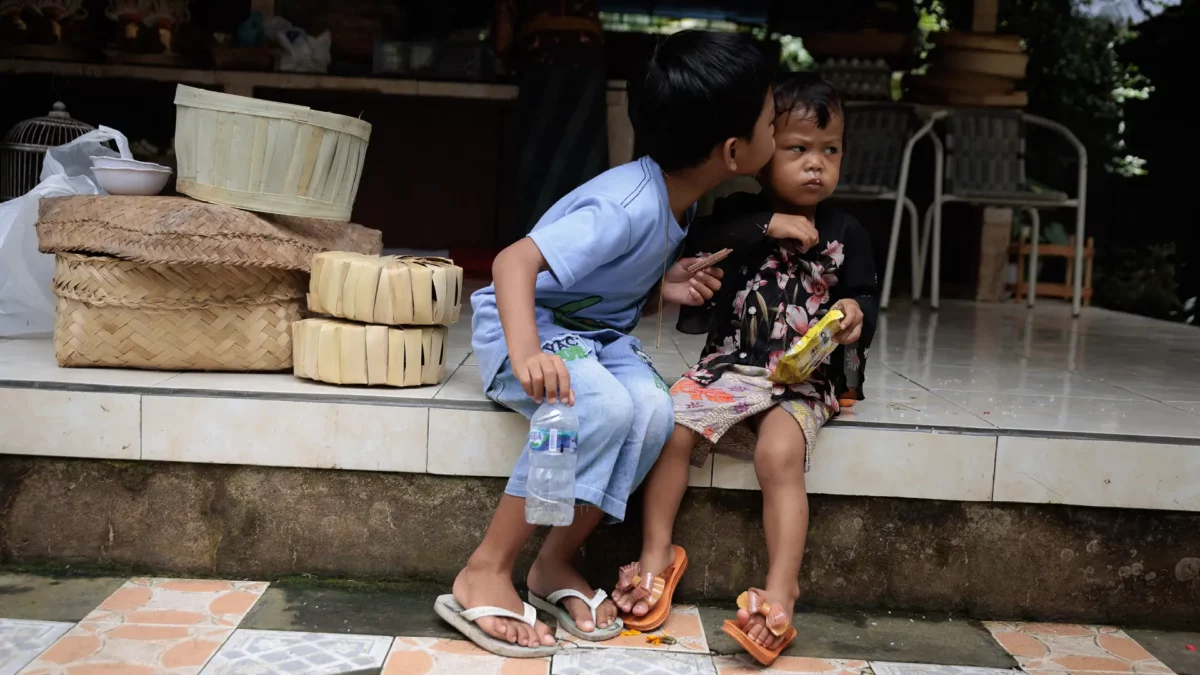
Soon we started to live a neighbourhood life. Doing the laundry next door, going to the little bar that opens three days a week and only at night. Shopping at the small greengrocer across the street, and doing simple things. Before we knew it, the neighbours started to recognise us. This, in a place like Bali, seemed at times pleasantly anachronistic for two ‘tourists’.
Extraordinary life in the garden
The beauty of travelling like this is also not knowing. Because your brain has no way to prepare itself, it has nothing to hold onto to make castles in the air. We arrived in Bali having found very nice and cheap accommodation. It was in the garden of a typical Balinese house, where at least three families lived. We knew there was a desk to work from, and we knew the kitchen was outside, shared with other guests.
Almost every day one of the ladies who lived there brought us fresh bananas. Flower offerings blessed our entrance. There were butterflies, and birds would drink at a stone sink filled with rainwater. A tiny blind dog stood guard, barking frantically but not moving an inch.
Every morning a group of ladies would gather on the adjacent porch to pack baskets and flower offerings to sell at the market. Then a wonderful perfume would spread everywhere. Literally everywhere. It was magical.
And we would pick frangipani from under the trees every time we entered or left the house.
A million spirits
Of the almost 18 thousand islands that make up Indonesia, Bali is the only one with a Hindu majority.
The care and devotion with which the religion is integrated into people’s lives, must have been part of its early charm, and today’s success.
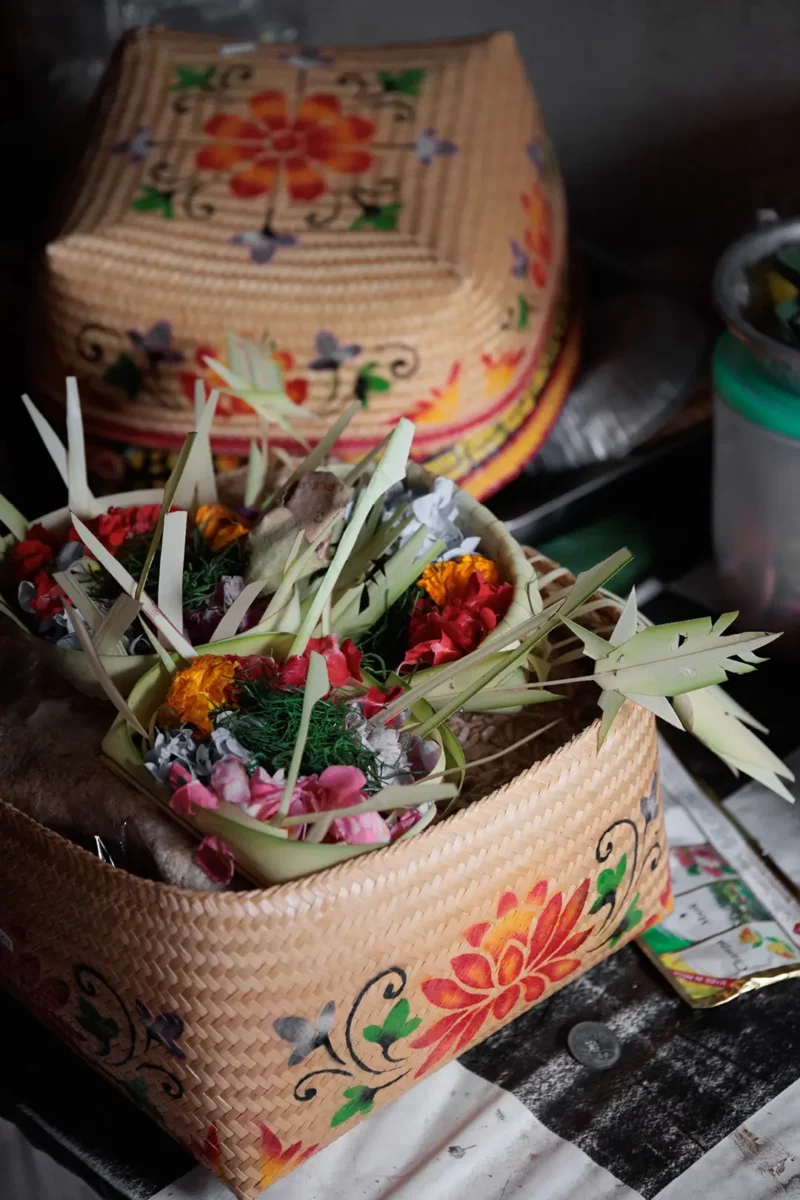
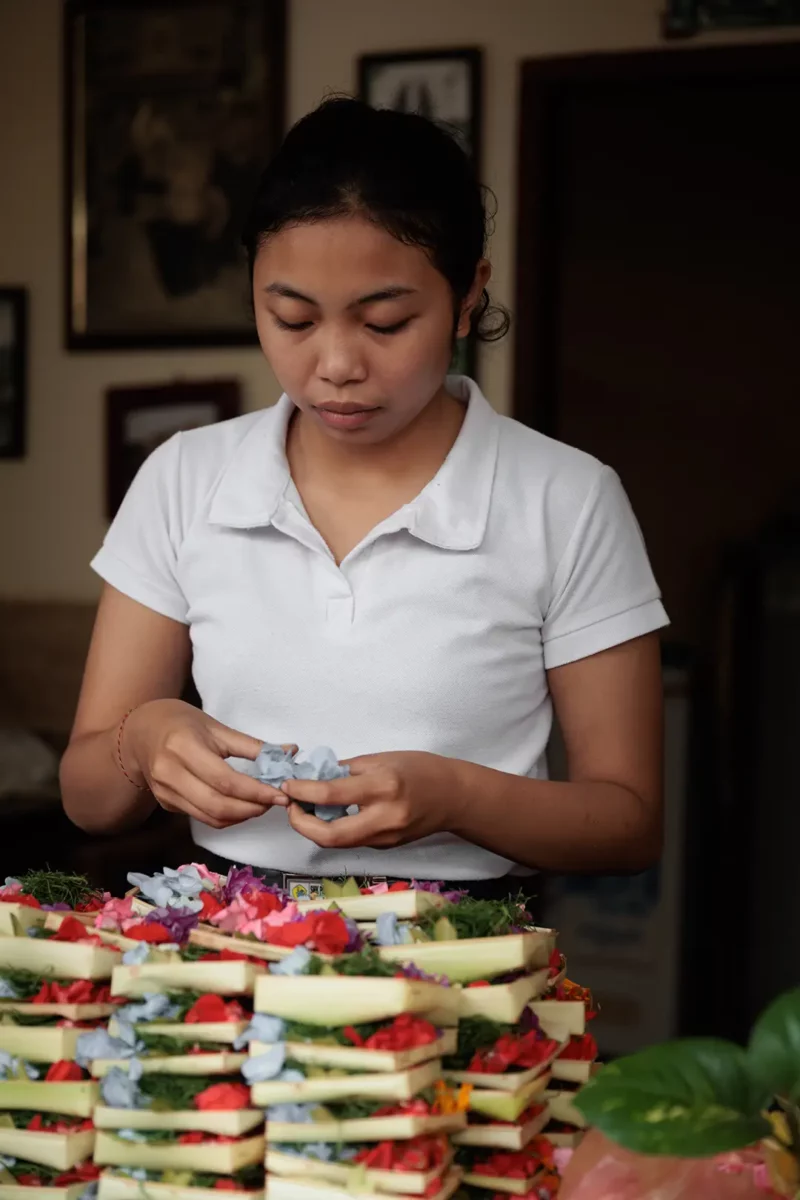
Many families make their own votive offerings at home. Baskets of palm or banana leaves filled with flowers and incense, placed around the perimeters of houses, streets, and temples. This takes time, commitment, calm and perseverance. Offering flowers to the earth as a sign of gratitude, several times a day, profoundly affects people’s lives. Is that why, in Indonesia, I had the impression of meeting the smiliest people in the world?
The power of water
Thanks to word of mouth and chanceous encounters, we made friends with Ketut, a young Balinese artist. His paintings are mostly large canvases full of details, symbols, opaque colours and labyrinths of signs.
We were invited to go to the temple of Pura Tirta Empul with Ketut, his wife and daughter. The invitation happened to fall on the date of a yearly purification ceremony. So, we did what anyone would do. We bought a sarong, and on a particularly grey day we immersed ourselves in water up to our waists. We followed Ketut’s instructions on the correct way to take part in the ritual.
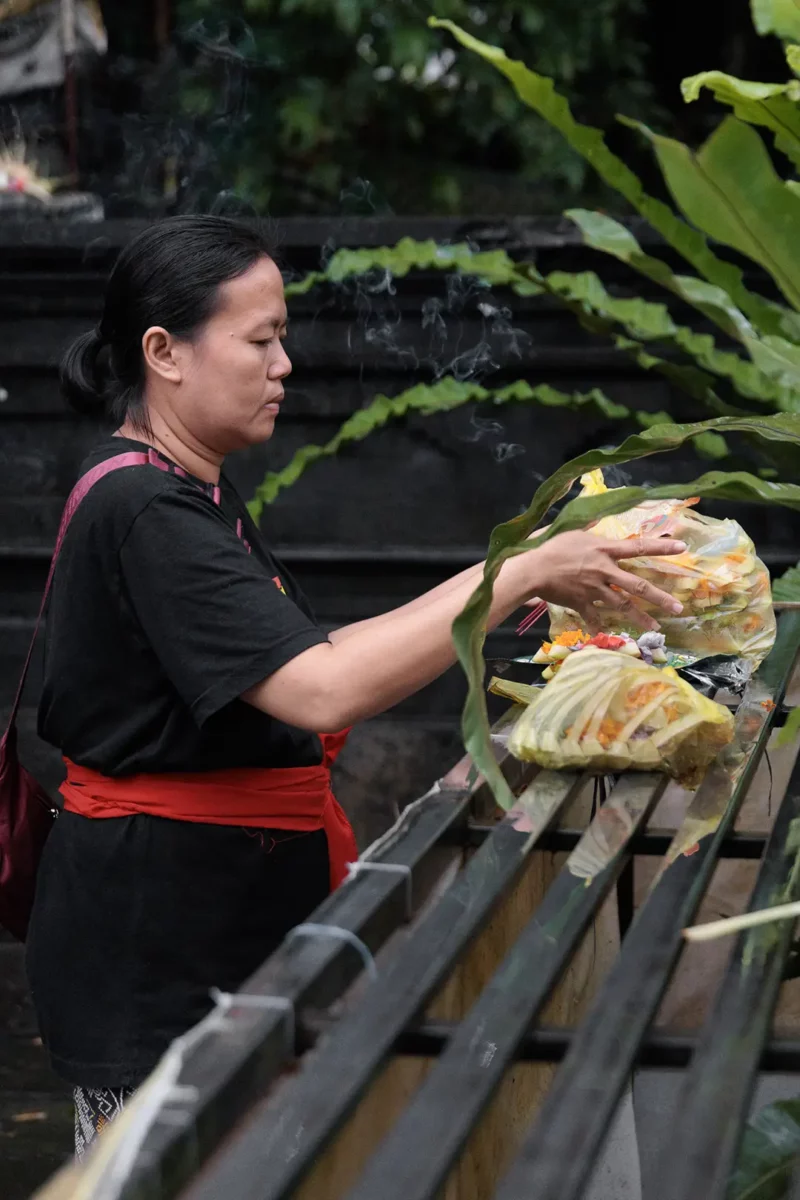
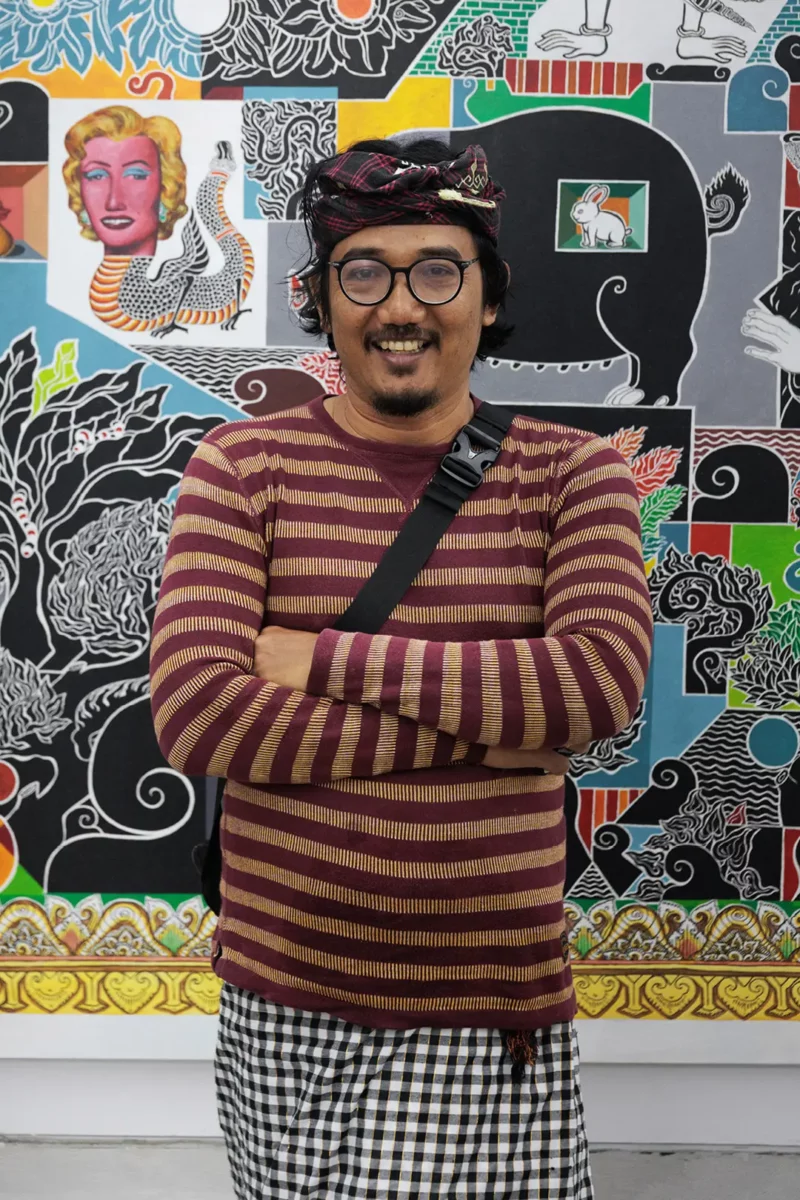
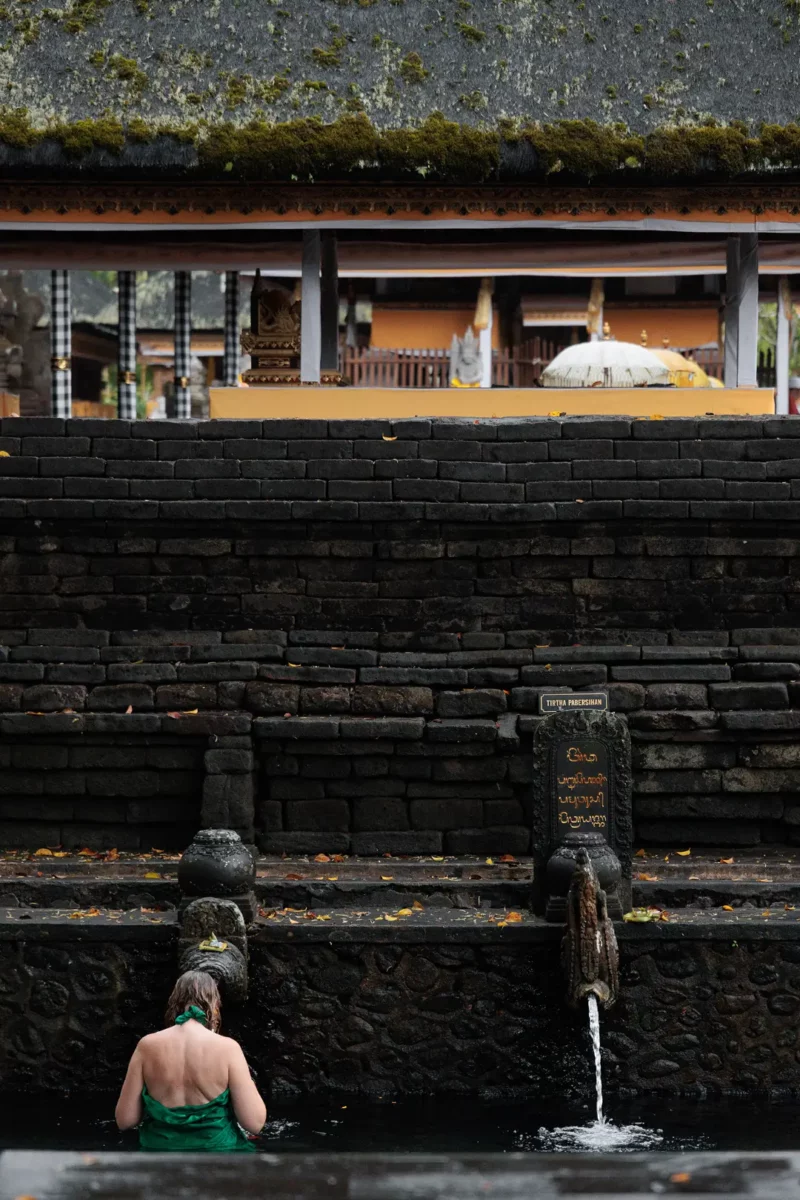
Where the water flows, you must wash your face thrice, take three sips and wet your head three times. And repeat. It was the first time I had done a water purification ritual in my life. Coming from a culture whose traditions have inevitably been diluted by progress and soiled by consumerism, the experience of being part of a highly symbolic and ancient act, was very intense indeed.
The swing in the sky
Bali’s natural landscapes, its temples that seem to be laser-cut, the flowers everywhere. That sense of ancient magic so alive in the caves, the mountains, the villages… These are some of the reasons why Bali is absolutely a place to experience.
Then there are the wooden and wicker swings in the middle of panoramas so beautiful they take your breath away. They are for a fee, obviously. They’re often part of an Instagram tour that some astute guide offers to various aspiring influencers.
The markets are places where mostly dreamcatchers, ripped jeans and decorative macramè pieces are sold. The most famous temples have become first and foremost places where one must photograph oneself.
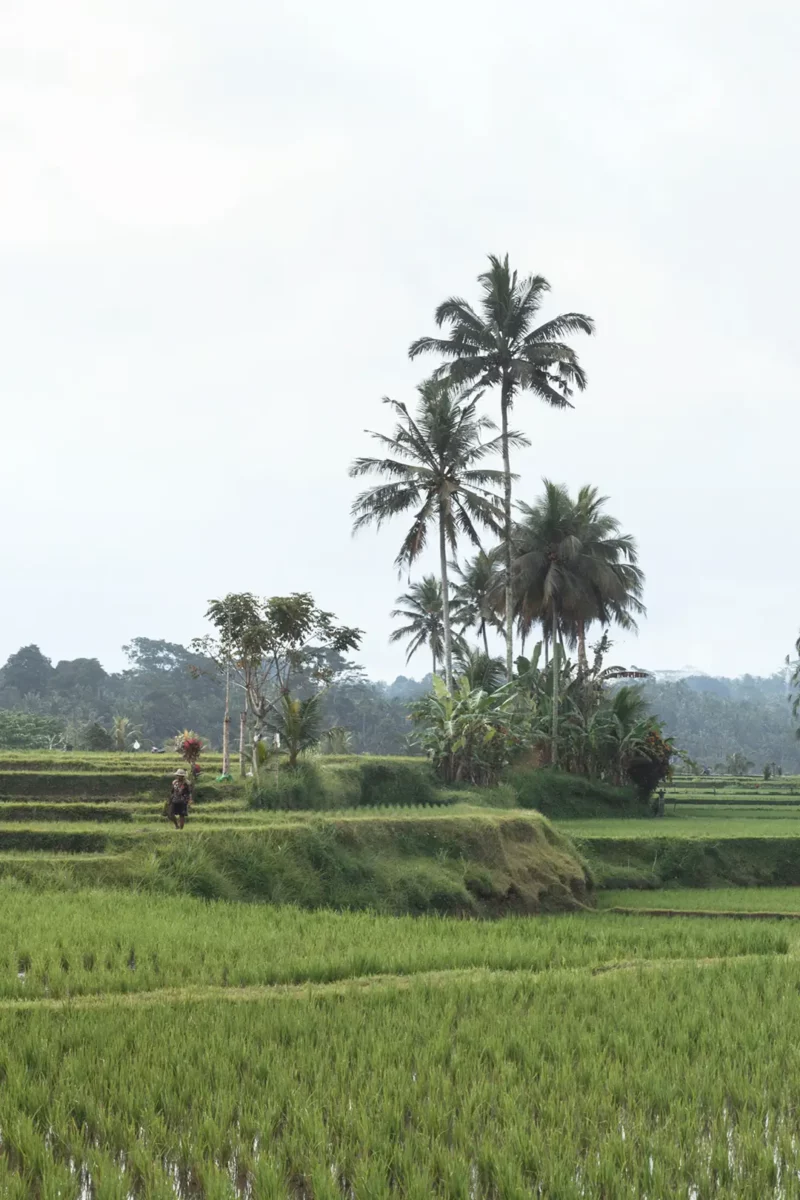
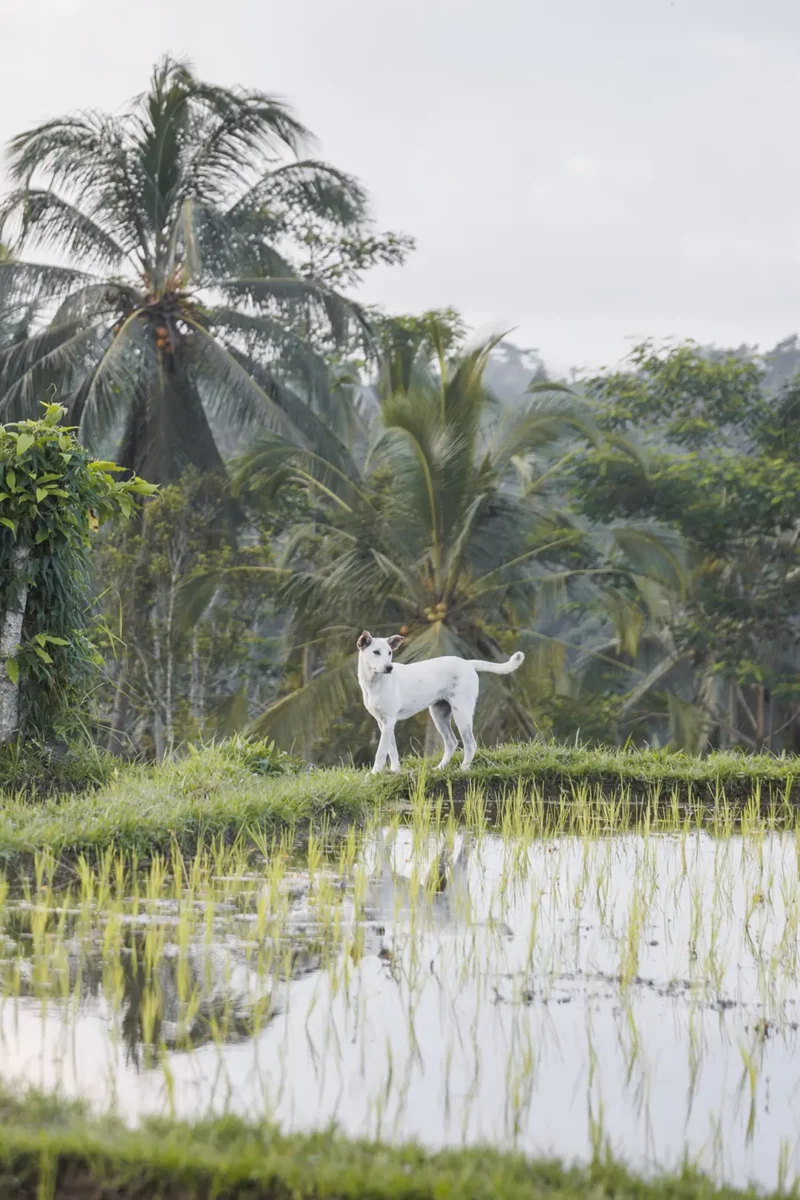
Bali is one of those places where beauty and contradictions coexist, also due to a tourism that seems to have slowly tarnished the authentic enamel of the place.
Between monkeys and rice paddies
In many parts of the island are monkey forests, true ecosystems where a large and protected population of monkeys live.
Statues, temples and fountains mingle with centuries-old Banyan ficus trees, tulip trees, red ginger and giant taro plants. A perfect background to welcome these incredible animals who – there is no doubt – are our distant cousins.
It always makes a certain impression on me to walk in those places where nature has been re-sacralised and protected. The monkey forest is definitely among those places.
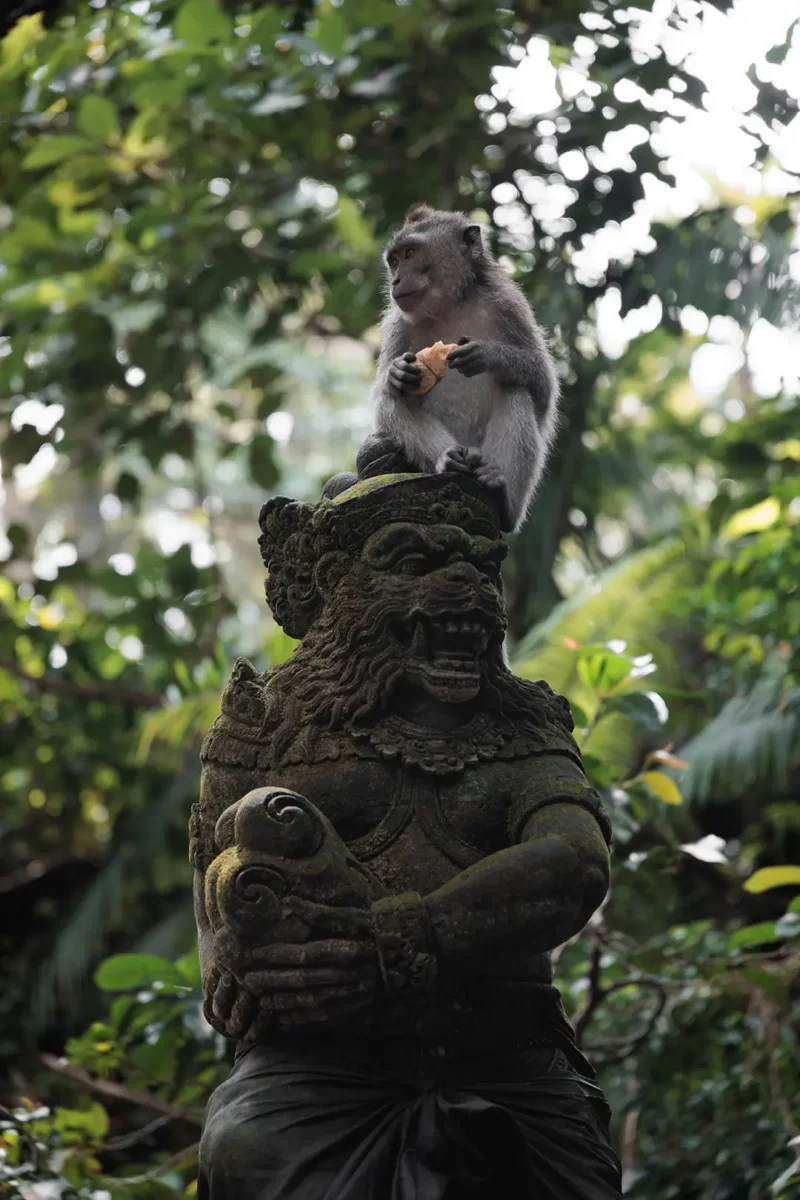

Paddy field walks are some of our favourite activities, here in Indonesia. Perhaps because of the conformation of the soil, or the colour palette between sky and earth, these walks have an even more evocative flavour.
Warung home cooking
In Indonesian tradition there is a word for places where you eat like you would at home, probably the equivalent of the Italian tavern: warung!
There are some on every street corner, popping up discreetly from the back of every house, or standing in front of you with huge fires and woks. In any case, in a real warung the food is spicy and you eat it with your hands. Of course, cutlery is available upon request, but it is mostly for tourists. If you are looking for authenticity I strongly recommend trying, at least once, to eat with your hands again!
Did you say tempeh?
You didn’t think we had forgotten about the food, did you?! In tempeh’s homeland, it is not difficult to find delicious dishes based on this curious preparation. Nasi campur, rice served with vegetables and meat, sate, skewers of minced meat wrapped in tasty lemongrass sticks, salad of grated coconut, spinach and soy sprouts seasoned with generous doses of spicy chillies.
A rich, tasty, colourful cuisine that we had the real pleasure of discovering.
Cooking with Mama
To celebrate these flavours, Jyl decided to take a cooking class in a warung run by a lady over 70 who has the wit and verve of one in her 30s. Mama has had a busy and interesting life, and she told us about it over some tasty steaming dishes. As soon as it’s online, you will read her story in one of our articles. Meanwhile have a look at her Facebook page to Ubud, Bali! Your taste buds can thank us later!
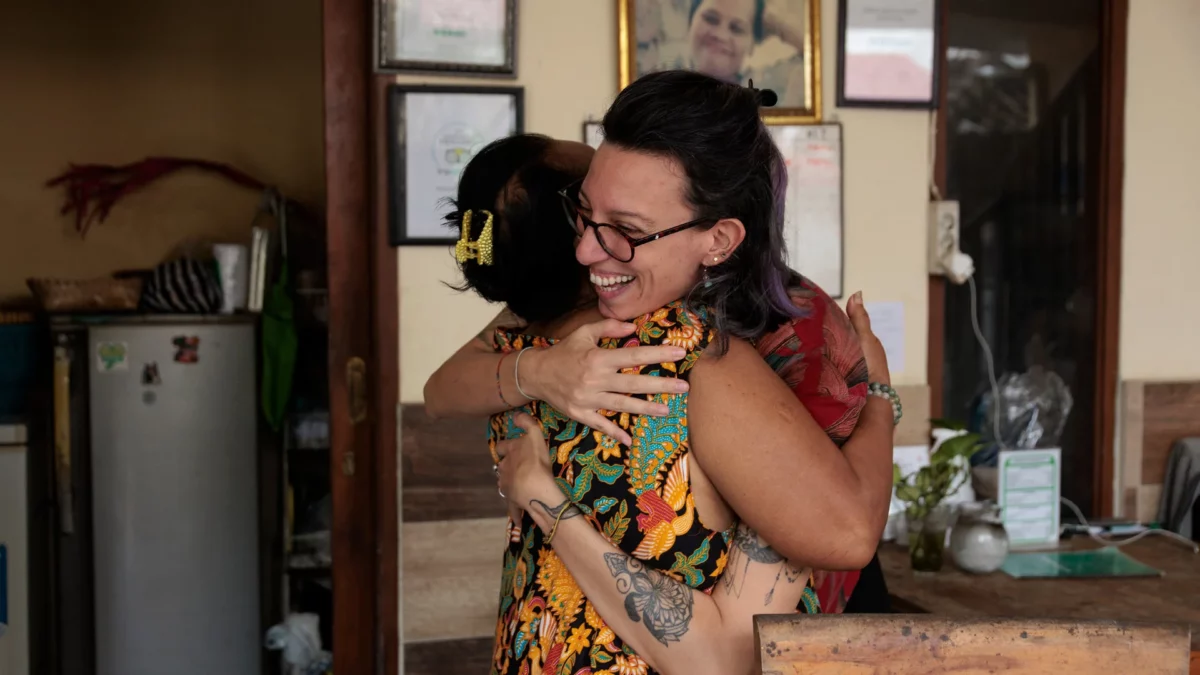
So, in the company of this charismatic lady, we learnt the recipe for making a delicious pineapple and coconut soup. Don’t be fooled by the flavours that we are used to linking with these fruits, it was a true delicacy! To complete the menu, we learnt how to prepare a chicken main course and a tuna main course, both of which were clever mixtures of pungent and mouth-watering flavours.
Mama told us about her travels, her recipes, the guest houses she has managed and the brand she has unknowingly built around her name. Thanks for the talks, the food, and the grandmotherly vibes you gave us, Mama! Don’t hesitate to read her full story below!
Beyond the more popular Bali, there is a more discreet and quiet island, made up of people who live with the rhythms of nature and their neighbourhood. Past the boho shops, the handicrafts made of seashells and small wood, there are smiles, and days spent weaving baskets of flower offerings to give to the ancestors, the land, the entrances, the passages and the exits.
The act of honouring life in all its details, with gratitude, is a practice rooted in Balinese Hinduism.
Look for real things when you come here. Leave the noisy, fashionable places for the quiet warung run by a young couple or an old lady. And let them tell you about their Bali, the real one.

